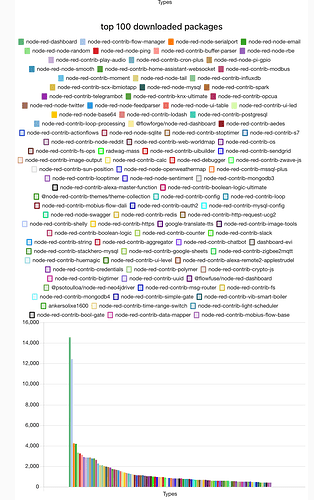Not really what I was trying to convey though it came across like that. What I meant was that it makes less sense for Node-RED because it isn't needed as much.
The Node-RED admin interface is an EDITOR and not a DASHBOARD. Also, Node-RED is relatively heavily async so it often does not make sense for the Editor to have visible trails. Also, for anything happening at speed - such as the 100's-1000's of MQTT messages being processed per minute, any kind of general tracing would be of little use. And also, Node-RED flows can be spread not just on 1 "page" but across many tabs. Unless you could isolate a specific part of the flow and limit to single messages, any tracing would be fairly pointless I think?
Not to say that such a tool would not have zero value - of course it would have value to some. But Node-RED was built around the assumption that the Editor is just that. Node-RED is certainly open so if someone wanted to build a visual tracer, I'm sure many people would use it. But it doesn't (in my view) need to be part of the core.
No dissent from me there at all. I've long spread the word on Node-RED - for over 10 years now in fact. 
Not going to disagree and I really hope that more people will offer up a web-based version of Node-RED that has a low entry point. I know that several such initiatives have already happened.
It is already in use vastly beyond IoT. I'm even seeing enterprise-level uses from big IT outsourcers. And various big tech companies such as Hitachi and Siemens already use it.
Without wishing to seem to put down FlowFuse at all, as a business, it can only meet certain types of use-case because of its size and current capabilities. Please don't think that is a put-down at all, it isn't. But as an Enterprise Architect dealing with organisations spending 100's of millions of £'s each year and working in highly-sensitive areas, it can be hard to introduce an open source tool such as Node-RED. For example, we would need significant investment in security testing and accreditation to be able to introduce it as a core tool. This would naturally be hard for a small company like FlowFuse to break into. A classic chicken-and-egg problem.
But I'm drifting off-topic now.
Indeed. And some of that does come down to how the core of Node-RED is architected. Some to the use of JavaScript.
JavaScript for example, is relatively poor at handling data science and analytics tasks. Something that I find endlessly frustrating.
Indeed. But which are you focused on? The existing islands? Or the gaps?
Which would bring more people to Node-RED?
Tricky isn't it. When I look at my own stats, I see a pretty consistent 2000 or so downloads per month for uibuilder and its been that way for the 6 1/2 year lifespan. I find it hard to believe that out of the total 193,155 downloads, even a small fraction of those are actually in-use. So are downloads even a useful measure of things in use?







